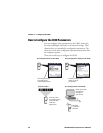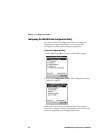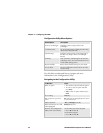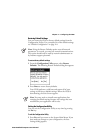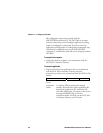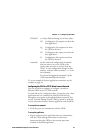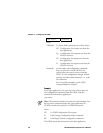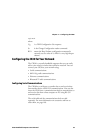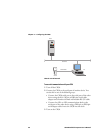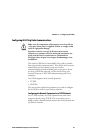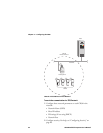
Chapter 2 — Configuring the CK30
CK30 Handheld Computer User’s Manual 35
When you scan bar code configuration commands, the CK30
emits a series of beeps unless the volume is turned off. There are
two beep sequences:
• One high beep means you scanned a valid configuration
command.
• Three low beeps means you scanned an invalid configuration
command.
Configuring the CK30 Through the Network
You can change the configuration parameters of the CK30 by
sending commands through a host computer or through the
network. If you are using a network, you can configure one or
more CK30s at a time. You can remotely configure the wireless
or Ethernet CK30 by sending a command from an application
on the host computer. You cannot set all parameters through the
network. You can only set those commands that have a syntax in
the CK30 Command Reference Manual.
Note: You can continue running an application on the CK30
while configuring it from the host.
Configuring the CK30 in a UDP Plus Network
You can use the host computer to configure a CK30 in your
wireless or Ethernet network. To send and receive configuration
data or files, you need to write a host application that can
communicate with the Intermec Gateway or DCS 30X.
For help, see the appropriate Intermec Gateway or DCS 30X
user’s manual. You use the Terminal Message Format (TMF)
protocol to send and receive transactions between the host
application and the CK30.
To set up the DCS 30X or Intermec Gateway
• Configure a peer-to-peer destination name for the host
application. Create a transaction ID, $NGCFGRSP, that will
be routed to this destination name. The DCS 30X or
Intermec Gateway uses the transaction ID to route responses
from the CK30 back to the host application. $NGCFGRSP is
a special transaction ID that the server uses to forward
configuration response data from a CK30.




